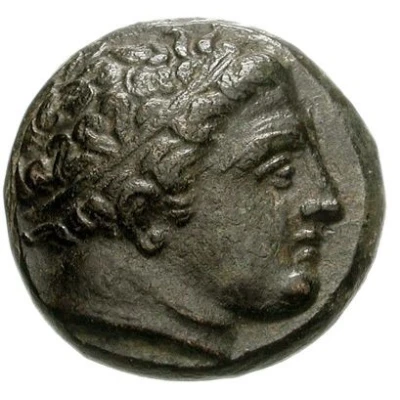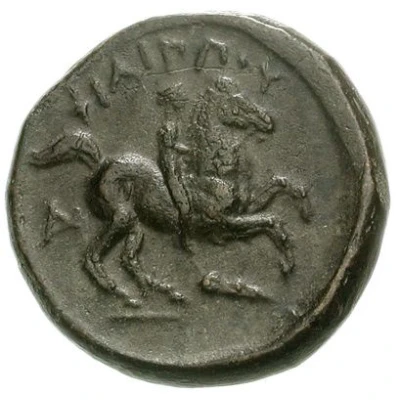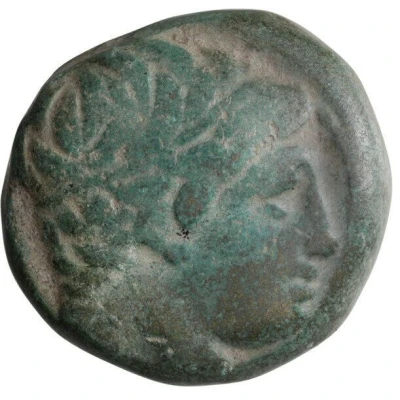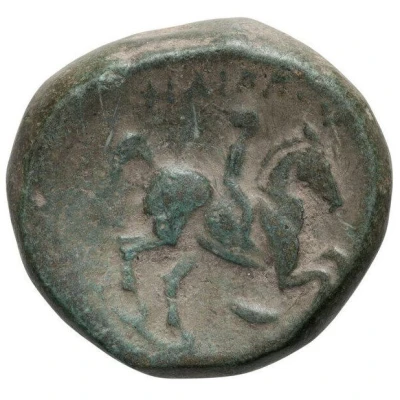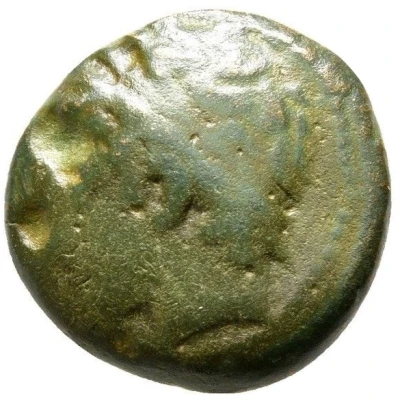
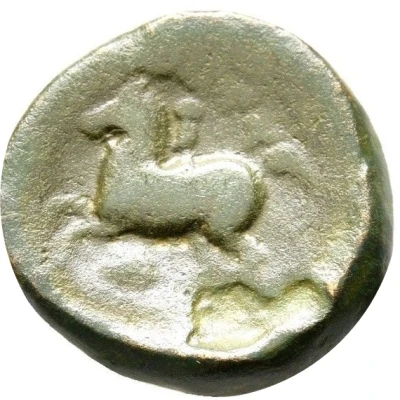

Tetrachalkon - Philip II Helios Head 359 BC - 336 BC
| Bronze | 4.9 g | 16 mm |
| Issuer | Kingdom of Macedonia |
|---|---|
| King | Philip II (359 BC - 336 BC) |
| Type | Standard circulation coin |
| Years | 359 BC - 336 BC |
| Value | Tetrachalkon (1⁄12) |
| Currency | Drachm |
| Composition | Bronze |
| Weight | 4.9 g |
| Diameter | 16 mm |
| Shape | Round (irregular) |
| Technique | Hammered |
| Orientation | Variable alignment ↺ |
| Demonetized | Yes |
| Updated | 2024-10-10 |
| Numista | N#154193 |
|---|---|
| Rarity index | 89% |
Reverse
Naked youth on horseback prancing left. Legend above
Helios head below
Script: Greek
Lettering: ΦΙΛΙΡΡΟΥ
Translation: Phillip (i.e Phillip II)
Comment
This coin with both Apollo head and horse to left is considered rare, or at least not as common as the other versions, specially right-right.
There is an excellent cross reference for all the Phillip II horses AE coins ( lefts and rights ) courtesy of Ancient Coin Traders:
www.ancientcointraders.com/philip_macedon_references.php
The control mark is described as, "with a 'lion's' head (alternatively described as a head of Helios, crab, thunderbolt or unknown symbol, depending on the reference) (Cited from: https://www.cointalk.com/threads/philip-ii-left-his-horse-left-so-alexander-went-right-into-persia.378840/)
Weights vary from 4,8 to 7,52 grams and diameters from 16 to 18 mm, according to various catalogs.
Here are some pictures from Wildwinds and from Ancient Coin Traders, as finer examples:
Interesting fact
The Tetrachalkon coin featuring Philip II (Helios Head) from the Kingdom of Macedonia was used as a form of currency during a time when the kingdom was experiencing significant economic growth and expansion. The coin's design, which features the image of Helios (the sun god) on the obverse and a horse on the reverse, symbolizes the kingdom's growing wealth and power. The use of bronze in the coin's minting also reflects the kingdom's increasing access to valuable resources, such as copper and tin, which were essential for the production of bronze. Overall, the Tetrachalkon coin serves as a tangible representation of the economic and cultural achievements of the Kingdom of Macedonia during Philip II's reign.





